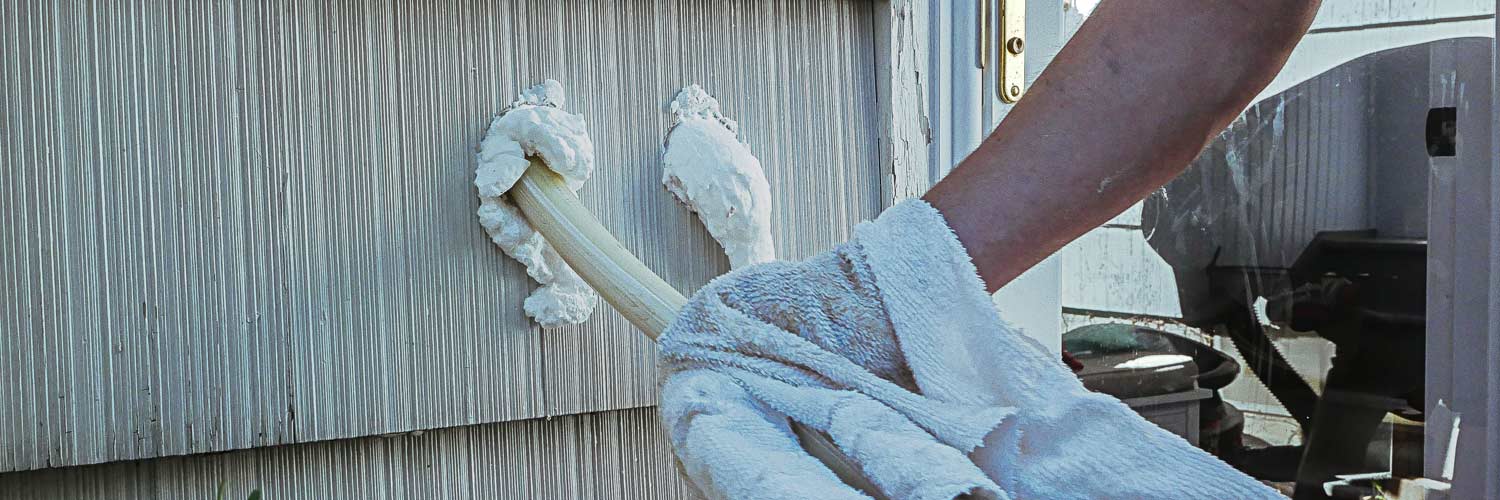How RetroFoam Insulation is Installed in Exterior Walls with Wood Siding
injection foam insulation | RetroFoam insulation | existing wall insulation | Installation


How is RetroFoam Installed in Exterior Walls with Wood Siding? (Quick Answer)
If the wood siding can be removed, then a row of siding is taken down around the home, and a hole is drilled into the sheathing into each wall cavity to inject the foam. If the wood siding can’t be removed, then the installer will drill through it.
There is also the option to install the RetroFoam from the inside.
Let’s get into the specifics of how RetroFoam is installed in homes with wood siding.
The thought of having your existing walls insulated from the outside with RetroFoam sounds like a great way to stop some of the problems you’re experiencing, but how do the installers work with wood siding?
RetroFoam injection foam insulation has been installed across the U.S. in thousands of homes to help with comfort and energy efficiency issues. Our dealers have worked with all kinds of different siding and know the best way to install the RetroFoam for each project.
There are a couple of ways to work with a home with wood siding, and in this article, we will cover all of them so you have a better understanding of those installation processes.
So, sit back, relax, and let’s talk about how injection foam insulation is installed in existing walls.
Injecting Foam Insulation into Existing Walls with Wood Siding
The installation of injectable foam insulation for existing homes with wood siding comes down to the exterior’s condition.
If the wood siding is in good condition, it can be removed in a row around the home’s exterior. If the wood is brittle and there’s a chance it could break, drilling through the siding makes the most sense.
Some homeowners opt to have the RetroFoam home insulation installed from the inside instead of drilling through the wood siding.
Let’s talk about the process if the wood siding can be removed.
When the lap boards or shake siding can be removed, installers will remove a row and drill right into the sheathing in each wall cavity. The installer will run a tool up and down the cavity to check for any obstructions. If they find anything, the piece of siding either above or below the obstacle is removed, and another hole is drilled into the sheathing.
The injection foam hose is then run from the top to the middle, then from the bottom up as the insulation is installed to ensure the cavity is completely filled.
Once the cavity is full, the holes are plugged, and the siding is replaced.
If the wood is too brittle to remove, then there are two options we already mentioned – drill through the siding or install the RetroFoam home insulation from the inside.
When drilling through the wood siding, the actual installation of the RetroFoam is the same. The holes are drilled in the siding, the installer looks for any obstructions in the wall cavity, the foam is injected, and the holes are plugged.
If you decide you’d rather have your wood siding left intact, the installation can be done from the inside.
If your home has T1-11 wood siding, the only option is to drill through it or have the RetroFoam installed from the inside.
Learn More About Injectable Foam Insulation for Existing Homes
As you can see, if your home has wood siding, you have a few installation options to choose from.
The best course of action is to talk with your RetroFoam dealer to see which method they recommend, so you’re on the same page.
If you want to learn more about the installation process for injection foam insulation in existing walls, check out our Learning Center.
Related Articles
How to Tell if There is Insulation in the Wall
How Do RetroFoam Installers Know the Cavity is Full When Insulating Existing Walls?
About Amanda Emery
Amanda previously has worked as a breaking news and crime reporter, TV news producer, and editor. As a journalist, she has won several awards from The Society of Professional Journalists - Detroit Chapter and the Michigan Press Association. Amanda uses her experience as a journalist to write content that will help educate homeowners on foam insulation benefits. When Amanda isn’t writing, she’s spending time with her husband Chris, daughter Lilith-Maeve, and rescued huskies Danger and Wendigo. She also loves knitting, making art, and cooking.



